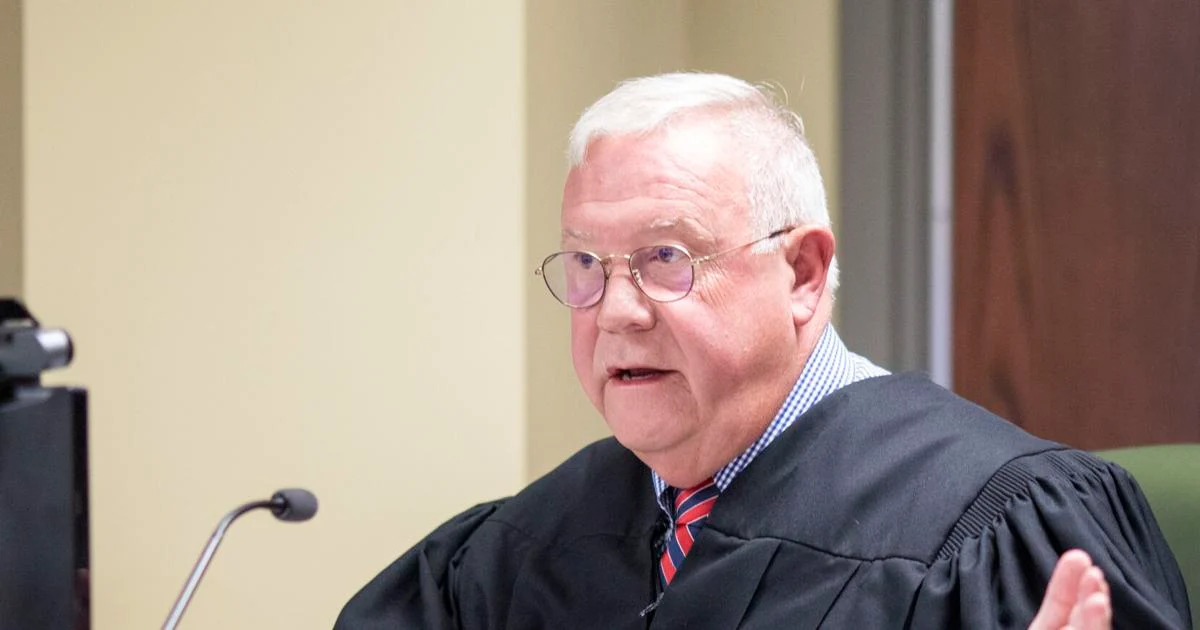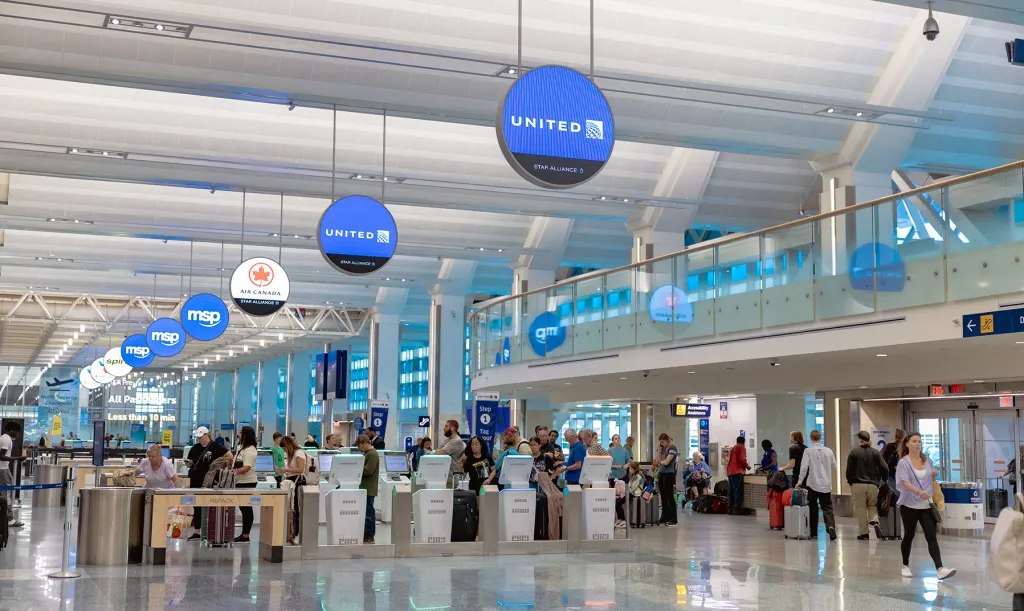By Forbes Staff,Megan Poinski
Copyright forbes

There are always unexpected challenges for new CEOs, though some are larger than others. When a recruiter first approached Christina Cassotis to become the CEO of Pittsburgh International Airport, she was asked what she thought about the city.
“I said, ‘I think nothing of Pittsburgh, and I have no interest in the job because it’s dead,’” she recalled in an interview with me.
She wasn’t talking about the city, but specifically about the airport. In 1992, the former USAir made Pittsburgh a hub, routing both domestic and international flights through its airport. Only 20% of passengers in the airport started or finished their trips there. But financial problems forced USAir to abruptly pull out of Pittsburgh, changing the business and character of the airport. While a few other airlines filled in the empty gates, Pittsburgh’s airport still hadn’t recovered when they called Cassotis in 2014.
But the more she thought about the job, the more she realized that a new perspective could transform Pittsburgh International Airport. She ended up taking the job and bringing new life—and a new purpose—to the Steel City’s airport. According to statistics in Pittsburgh Magazine, during her tenure piloting the airport, Cassotis has increased the number of nonstop destinations from 36 to 61. New airlines and international routes are coming. Passenger traffic has gone up about 25%. She built a natural gas and solar energy microgrid to power the airport. And she has helmed the construction of a new $1.57 billion landside terminal, slated to open later this year.
“To me, this has been just how do you transform a culture to transform a community and an industry that, candidly, I think sometimes is lazy,” Cassotis said. “We’ve been spending the last 10 years doing that.”
Today’s edition of Forbes CEO takes a closer look at how Cassotis was able to bring a complete turnaround to the Pittsburgh International Airport, transforming it from a business that was dead to one that is vibrant, alive and inspiring airports of all sizes worldwide.
Everyone knows that Forbes is a great place to read inspiring business stories. If you’re not a Forbes Member yet, we’re offering a special deal for newsletter subscribers: 25 days of free, unlimited access to Forbes.com, followed by $25 off an annual subscription. Our Members also get invites to exclusive Q&As, as well as our subscriber-only newsletter, Forbes Insider.
This is the published version of Forbes’ CEO newsletter, which offers the latest news for today’s and tomorrow’s business leaders and decision makers. Click here to get it delivered to your inbox every week.
ON THE RUNWAY
Cassotis was born into the airline business. Her father, who was a fighter pilot in the Vietnam War, was later recruited to fly for Pan Am Airlines. The family lived in Hong Kong and New Hampshire, and Cassotis remembered having lots of conversations with her father about the big world.
From a young age, she knew she wanted to work with airplanes and flying, but she didn’t want to be a pilot or a flight attendant. And after some bumpy years in young adulthood, she went to college and worked in communications for Boston Logan Airport. From there, she joined ICF SH&E, an aviation consulting company, working in strategy and management jobs.
Pittsburgh International Airport CEO Christina Cassotis.
Laura Petrilla
After 17 years, she got the call from Pittsburgh International Airport. As an airline industry professional, she was familiar with the problems Pittsburgh’s airport faced. And she knew how airlines and travelers had changed in the previous decade. Since USAir had pulled out of Pittsburgh, every leader at the airport had tried to make it a hub for another airline. Cassotis knew from her experience that wasn’t going to happen.
“I said, ‘Look, I think you can do this, but you need to change your business model.’
“They said, ‘Can you get more airline service?’
“I said, ‘Yeah, in my sleep.’”
Cassotis said she had nothing to lose. She’d seen airports run successfully in Europe and Asia without completely privatizing and being a destination airport, where people started and finished their trips. That type of model wasn’t used in the U.S., but Cassotis thought it could be—and it would be more beneficial to passengers and staff.
She initially pitched the job in Pittsburgh to her husband as a three-year experiment.
“It’s been 10, so we’re still going,” she said.
GETTING READY TO TAKE OFF
As soon as she started in Pittsburgh, Cassotis knew that the airport needed to make a huge pivot. It had to stop thinking of itself as a deserted former hub. No airline spent time being concerned with how Pittsburgh International Airport fared.
“What they care about: Is my plane making the most money it can, and is it serving the communities that fit into a network or a system that I’ve identified as our business model?” she said.
Pittsburgh International Airport needed to reconnect with the community in almost every way, Cassotis said. It needed meaningful contact with the city. And Pittsburgh as a city had seen hard times—both with the city’s signature steel mills closing in the last decades of the 20th century and USAir abandoning the hub it had built.
There have been ongoing efforts to revitalize and rejuvenate Pittsburgh, and Cassotis said she wanted the airport to do more than say, “Let’s just catch up to the community’s renaissance. And at some point it became, ‘Let’s do more than catch up. Let’s start leading in some areas by what I call the art of assembly.’”
Cassotis brought the entire community together through business with the airport. She partnered with universities, robotics companies, and businesses in the natural gas-rich Marcellus Shale. Employees were reintroduced to a new role, with a stake in bringing people to Western Pennsylvania and supporting the airport.
Then she focused on how the airport could provide airlines with what they wanted. Cassotis said that airlines care about efficiency, cost, valued partners and services. She changed the way Pittsburgh International Airport pitched itself to airlines, and doubled down on its strengths. Many of them were already there. Pittsburgh International Airport doesn’t close. It’s in a good location for weather-related diversions of any flights in the Northeast U.S.
Then Cassotis found other things that she could work on to become more attractive to airlines. She lowered costs. She researched and built a power microgrid, which had the dual effect of reducing costs and boosting resiliency.
Pittsburgh International Airport CEO Christina Cassotis speaks at a press conference in January with Pennsylvania Gov. Josh Shapiro about his proposed energy plan.
Pittsburgh International Airport
When something big goes wrong at an airport, it can be international news. In December 2017, a fire at an underground power facility caused an 11-hour power outage at Atlanta Hartsfield-Jackson International Airport, canceling flights at the world’s busiest airport and crippling travel throughout the United States a week before Christmas.
Knowing how vital airports are—and how upset people become when they’re unable to get where they want—Cassotis didn’t want Pittsburgh International Airport to be vulnerable in the same way.
“It’s not just the weddings and the business meetings,” she said. “It’s the organs that need to land. It’s the critical supplies that a hospital or a utility needs in the cargo hold. That is stuff that is real.”
Western Pennsylvania is located near the natural gas-rich Marcellus Shale, and Cassotis wondered if the airport could use that to its advantage. She started researching the construction of a microgrid for the airport—basically its own power system, which would allow it to operate in any conditions.
The 20MW microgrid, powered by natural gas drilled on site and with nearly 10,000 solar panels, went live in 2021. Airport Senior Vice President for Engineering and Intelligent Infrastructure Tom Woodrow told Blue Sky News in 2023 that the airport is saving at least $1.5 million a year in utility costs, and it reduced regional carbon emissions by approximately 6 million pounds.
Cassotis said that since the microgrid went live, there have been several power outages in the Pittsburgh area that didn’t impact the airport at all.
The microgrid was built through a public-private partnership, so there were no added costs to the airlines. But, Cassotis said, the local utility company—under different leadership at the time—was not helpful at the beginning of the project. In fact, she said, a former leader threatened to block the project.
“I was like, ‘Fun,’ because we’re a big customer and I wanted them to build it,” she said. “I said, ‘Listen, we can innovate together. You can innovate as a utility and we’ll innovate as an airport.”
A NEW EXPERIENCE
Pittsburgh International Airport CEO Christina Cassotis tours construction of the new landside terminal.
Pittsburgh International Airport
Right now, the finishing touches are being made to a brand-new landside terminal. The new terminal is intended to both bring a new and more efficient experience for passengers coming and leaving Pittsburgh, as well as a strong connection with the community.
Cassotis said firms hired to work on the project were based on their portfolio and bid price, and also how they worked together with the airport’s team on tasks designed by organizational psychologists. After they were chosen, the firm received a crash course in Pittsburgh.
“We had them do a tour with a local newscaster on the history of Pittsburgh,” Cassotis said. “We had them meet with the robotics community, with philanthropies, with the universities for three days. And we said, ‘Now go build an airport for this community.’”
The terminal will feature black and gold signs—colors for the Pittsburgh Penguins, Pirates and Steelers—and local trees. The bridge and tunnel to the airside terminal will resemble the iconic entrance to downtown Pittsburgh through the Fort Pitt Tunnel.
Cassotis said there are several efficiency upgrades as well. Many of those came from talking to employees and showing them designs and ideas. She said it was important that the facility’s plumbers, HVAC mechanics and electricians understood what the new facility would be like from the outset, and that it would be tailored to meet their specific needs.
A DEEPER CONNECTION
Pittsburgh International Airport CEO Christina Cassotis testifies before the Senate Subcommittee on Aviation in March 2017.
Pittsburgh International Airport
Cassotis said that the most important tool to successfully make transformative change is cultivating a deep connection with the entire community doing business with the airport: Airlines, employees and all of Western Pennsylvania. Her decisions haven’t always pleased everyone, but she says she always listens and explains why choices were made.
“As I was talking to people wanting them to feel good about this and buy into it, I was tying it to things that are important to them, so that they could see the win in it,” she said. “And they could also come to me with the, ‘I don’t get this.’ And I used to say, ‘Tell me what’s wrong so I can hear it.”
After the new terminal opens this year, Cassotis has more plans for Pittsburgh International Airport. Her team is now researching how they can create sustainable aviation fuel on-site, something no other airport in the world is doing now.
While Cassotis has been able to bring big changes to the airport, she said she doesn’t think it’s difficult to be a change agent.
“You need a vision, and I think you need to be relentless in executing it, but that doesn’t mean you’re not pivoting along the way,” she said.
COMINGS + GOINGS
Natural gas company CNX Resources Corporation announced Alan Shepard will be its next president and chief executive officer, effective January 1. Shepard is being promoted internally from his role as president and CFO, and he will succeed Nick Deiuliis, who is retiring.
Construction management software provider Procore Technologies appointed Ajei Gopal as its next chief executive officer, effective November 10. Gopal most recently worked at Ansys as president and CEO, and he will succeed founder Tooey Courtemanche, who will remain as board chair.
Cybersecurity firm Barracuda appointed Rohit Ghai as its new chief executive officer. Ghai previously worked in the same role at RSA, and he will succeed Hatem Naguib.
STRATEGIES + ADVICE
Nike recently recast its signature advertising line, Just Do It, into a question focused on Generation Z: Why Do It? Business leaders should do the same; those who examine why they’re doing things tend to perform better.
What did you do over the weekend? These seven weekend habits of effective CEOs help keep you grounded and refreshed to start the new week on Monday.
Which business announced last week it would close several locations and cut 900 non-retail jobs before the end of its fiscal year in a $1 billion restructuring?
C. Starbucks
See if you got the answer right here.
Got a tip? Share confidential information with Forbes.
Editorial StandardsReprints & Permissions



